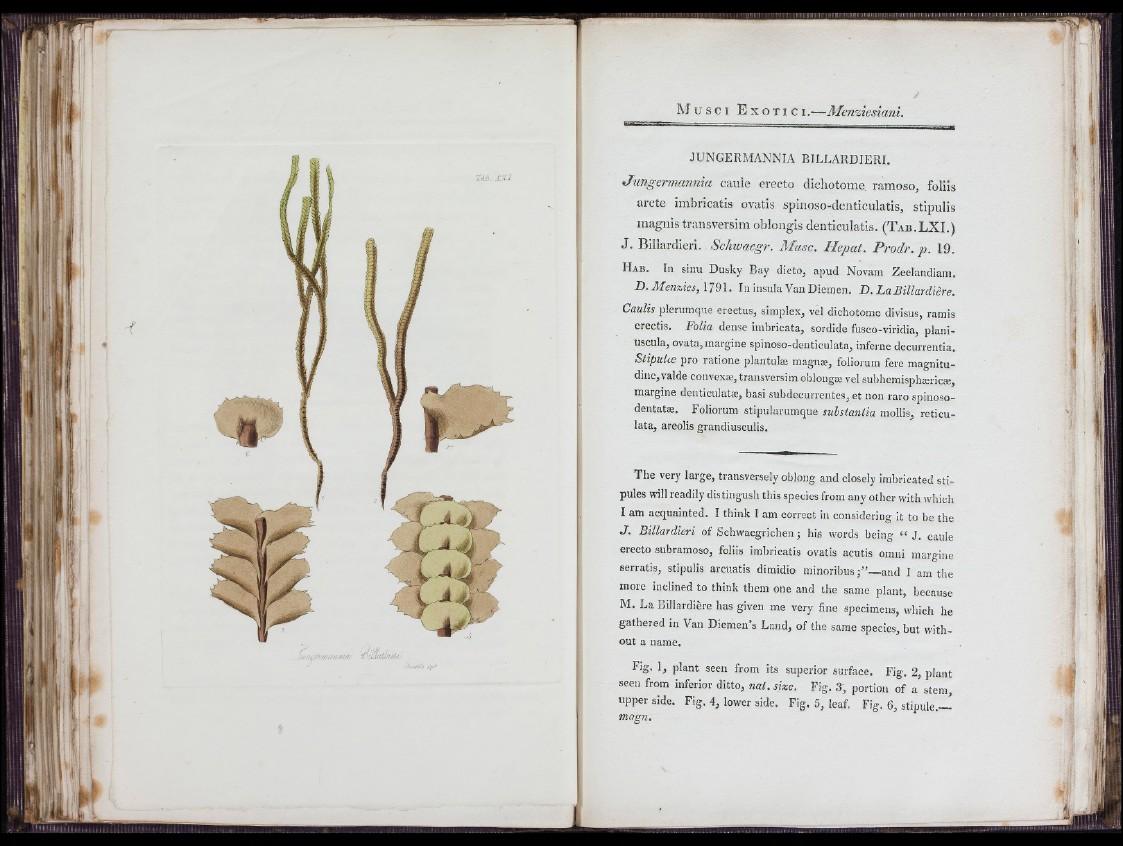
Il»
'ì
i r ' '
/
M
'XjUi. X'Pj
M
JUNGERMANNIA BILLARDIERI.
Jungermannia caule erecto dichotome ramoso, foliis
arcte imbricatis ovatis spinoso-denticulatis, stipulis
magnis transversim oblongis denticulatis. (Tab.LX I.)
J. Biliardieri. Schwaegr. Muse. Hepat. Prodr. p . 19.
H a b . In sinu Dusky Bay dicto, apud Novam Zeelandiam.
D. Menzies, \7 9 \. In insula Van Diemen. D. L a Biliardière.
Caulis plerumque erectus, simplex, vel dichotome divisus, ramis
erectis. Folia dense imbricata, sordide fusco-viridia, planiuscula,
ovata, margine spinoso-denticulata, inferne decurrentia.
Stìpulce pro ratione plántulas magnæ, foliorum fere magnitudine,
valde convexa?, transversim oblongæ vel subhemisphæricæ,
margine denticulatæ, basi subdecurrentes, et non raro spinoso-
dentatæ. Foliorum stipularumque substantia mollis, reticulata,
areolis grandiusculis.
The very large, transversely oblong and closely imbricated stipules
will readily distingush this species from any other with which
I am acquainted. I think I am correct in considering it to be the
J . Biliardieri of Schwaegrichen; his words being “ J. caule
erecto subramoso, foliis imbricatis ovatis acutis omni margine
serratis, stipulis arcuatis dimidio minoribus and I am the
more inclined to think them one and the same plant, because
M. La Biliardière has given me very fine specimens, which he
gathered in Van Diemen’s Land, of the same species, but without
a name.
Fig. 1, plant seen from its superior surface. Fig. 2, plant
seen from inferior ditto, nal. size. Fig. 3, portion of a stem,
upper side. Fig. 4, lower side. Fig. 5, leaf. Fig. 6, stipule.-^
magn*